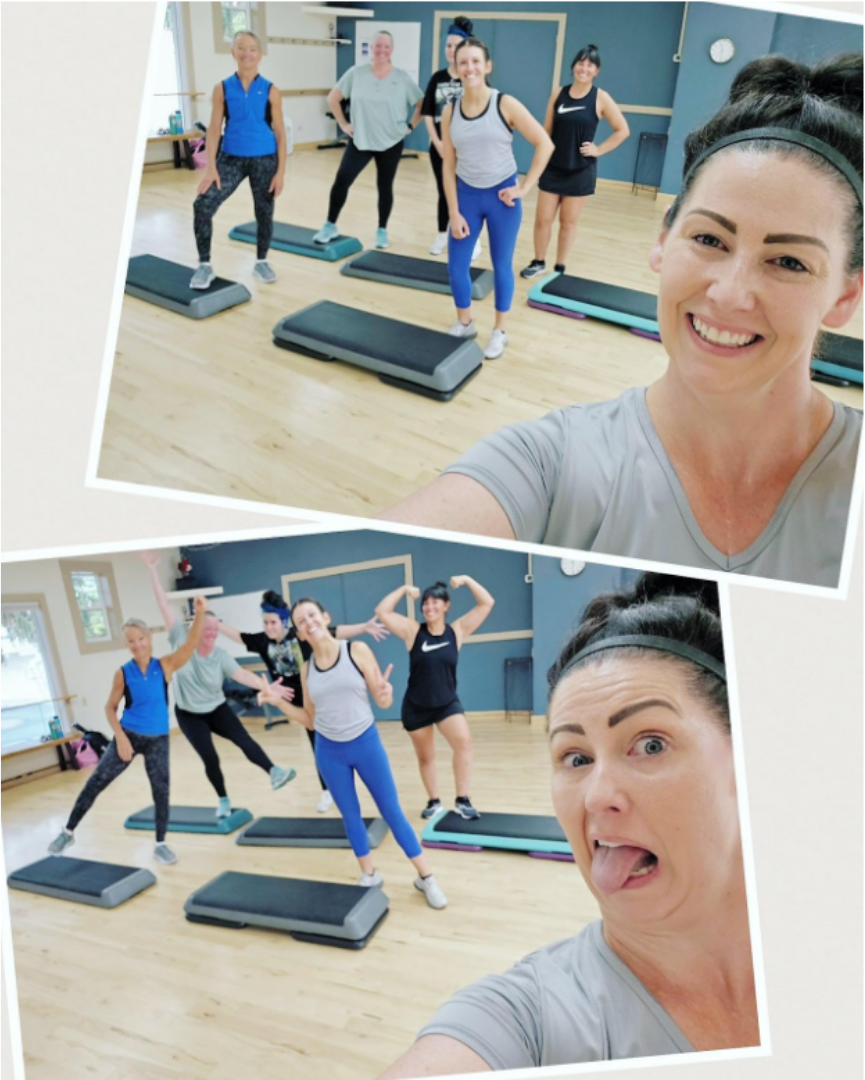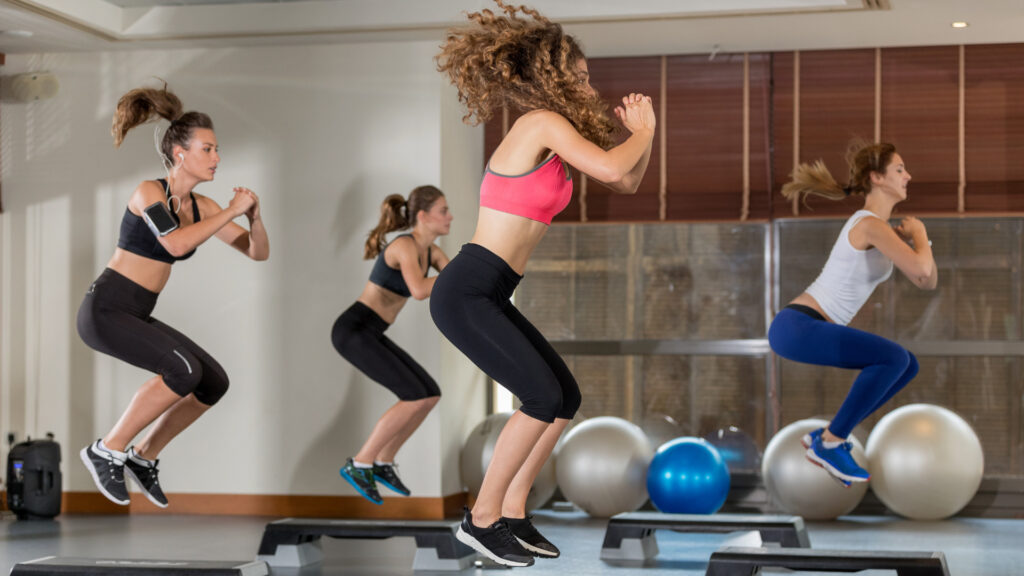Step aerobics is fun, mentally and physically challenging, and effective. So, what gives? Where did it go? From 1990 to 2005, step was a mainstay of every group fitness class schedule. By 2010, it had virtually disappeared. There are still pockets of loyal step fans and programs today, but step went from the crowning jewel of group fitness to the embarrassing stepsister of water aerobics with lightning speed. (For the record, I love water aerobics and step.) Sure, group fitness has changed in recent decades, but you don’t see cardio kickboxing or group strength training growing old and dusty on the shelf.
To understand what happened, we need to first take a quick look at the early days of this workout. Step originated as a result of fitness research indicating that stepping up and down was as or more effective than running and of a fitness pioneer (by the name of Gin Miller) developing a gym workout utilizing the step after finding success using a step to rehabilitate a knee injury. MANY other fitness pioneers contributed to what we think of today when we hear “step aerobics.” Their work culminated in an innovative, fun, music-driven, effective cardio workout experience that swept the nation and created loyal fans.
In the early days, step classes featured music with fairly slow beats per minute (somewhere in the 115 to 120 range). Step movements were straightforward, and patterns were simple. The workouts were athletic and appealed to a large number of male participants. As time passed, step instructors tested the boundaries of what was possible on the step, perhaps to the ultimate detriment of the format. Music beats per minute increased (it was not unusual to have tempos above 140). The choreography grew more complex, with more foot placements occurring within 8 counts and more moves occurring within a musical phrase. Steps got higher. One step wasn’t challenging enough anymore, so double step entered the scene. And when two steps weren’t good enough? Quad step made its debut.
Before long, only the most devoted and coordinated fans remained in class. The original masses found they couldn’t keep up with the choreography and were getting injured. New participants who dared to give class a go found they were lost most of the time, didn’t get a good workout, and felt singled out because everyone else knew what they were doing. Not so slowly, but very surely, class numbers dwindled, the number of classes being offered shrunk, instructors moved on to the next fun thing that filled their studios, and eventually the format found itself near extinction.
So what? Who cares? Thanks for laying the groundwork, step, but the other formats have it from here. Right? Wrong. The same pitfalls that took down the step empire are still plentiful in group fitness. There is an almost insatiable desire to push boundaries and limits. This is great if it leads to better results and more-effective workouts, but it will destroy your classes if it isn’t. Adding extra plyometrics, repeating sections just because, adding weights where they don’t belong, skipping or shortening warmups and cooldowns, pitching up the music tempo, heating up the room for no reason, skipping breaks or rests, creating more complicated versions of moves, catering always to the most fit and advanced people in the room, etc., will undermine all of the other really great things you are doing over time. In the moment, many of your participants will think they want it and love it. The steppers thought that too, until they didn’t.
Instead of pushing boundaries or limits, try some of these methods that are sure to create sustainable, long-term results.
- Help your people make even the simplest thing safe and effective.
- Teach participants where they should feel each exercise and share the benefits of the movements.
- Show options and encourage people to take the ones that work best for their bodies, fitness levels, and current goals.
- Encourage participants to push their own limits by having the best form, using a challenging weight or range, by doing all the reps, or by helping their bodies properly prepare for and recover from their workouts.
- Show them how to find the FUN in everything!
Our job isn’t to prove we’re the fittest one in the room, the hardest instructor in town, or the person with the most insane classes. Being an instructor isn’t actually about us or what we are capable of at all. Our job is to guide everyone in the room to the workout they need that day, and to help them love it while they’re at it! Do that, and you’ll see success (and your participants will too).
P.S. Step isn’t dead. I’m going to resurrect it.



